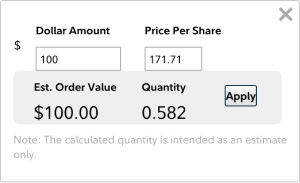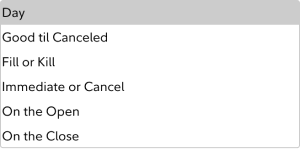1. Pick an account
Choose and open the account(s) that are right for you. How do you choose? It depends on why you want to invest.
- For retirement, options include a traditional IRA, Roth IRA, rollover IRA.
- For general investing and trading, investing for a big goal (like the down payment on a house), or simply giving your money the potential to grow, consider the Fidelity brokerage account.
- For a child, there are many options, including a 529 (for education) and a Fidelity Youth Account (to get an early start on investing).
If you're still looking for the right fit, browse all of our account options. Remember that some accounts are more hands-on (where you choose and manage your own investments) and some are managed by professionals.
2. Funding the accounts
Once your account is open, it's time to fund it. It's easy to link your bank account(s) to your Fidelity account(s)—then you can transfer money anytime or set up automatic deposits.
3. Choose your investments
When your money hits your account, it will be automatically deposited as either cash (in a brokerage account, you might see something like "core position" or FCASH) or in a money market fund (for accounts such as IRAs).
IMPORTANT NEXT STEPS: It’s up to you to choose your investments. Investing is how your money has the potential to grow over time. How do you choose your investments? Give some thought to your desired level of risk, your timeline, and how involved you’d like to be.

Stocks
Stocks are what many people think of when they think of investing. Deciding what individual stocks to buy (and which to sell, when) is one of the most labor-intensive ways to invest. There is potential for high highs and low lows. You're basically buying a small stake in a specific company, so it's important to do your research, understand the risk, and don't put all your eggs in one basket.
Learn more: 7 investing myths and realities about stocks
Bonds
When you are investing with a bond, it's as if you are giving a loan to a company or government. They are agreeing to make regular interest payments to the owner of the bond (i.e., you) over a set period of time. When the bond's loan period is over, the company/government then also pays back the original amount of the loan. Bonds are often lower risk than many other types of investments, but conversely, their rate of return is generally capped.
Learn more: What is a bond?
Mutual funds
A mutual fund is group of stocks, bonds, and/or other investments—but instead of creating the group yourself, a professional has created it for you. There are tens of thousands of mutual funds, including target date funds (which start off more aggressive, then get more conservative as they get closer to a specific date), index funds (which try to mirror a particular stock or bond index, like the S&P 500 or Nasdaq), or thematic funds (which focus on areas of interest, like the environment or women).
Learn more: How to pick a mutual fund
ETFs
An exchange-traded fund (ETF) is also a group of investments. There are a few differences between ETFs and mutual funds: ETFs can be bought and sold anytime throughout the trading day, unlike mutual funds, which close at the end of the trading day. And unlike mutual funds, ETFs don't usually require a minimum investment. There are currently several thousand ETFs on the US stock exchanges.
Learn more: How do you choose the right ETF?
There are others that get a bit more complex (such as currencies), so if you'd like to learn more, visit our Learning Center.
4. Place a trade
Great! Now you know what you want to invest in. But how, exactly, do you get those investments into your account? The trading widget will show you which of your accounts allow you to choose and manage your own investments and how much money you have available to trade (i.e., buy and sell). Let's walk through how to do that.
- Choose a trade type

- Select an account to trade in

- Choose an investment

- Select an action

- Pick a quantity

- Select an order type

- Choose how long your order is active

5. Check in on your investments
You're invested! Your money now has the potential to grow. Remember, because you're choosing and managing your investments yourself, it's important to review them regularly.
A few questions to ask yourself:
- About diversification: Are your investments diversified? This means you spread your investments around to help manage your risk. We believe that you should have a mix of stocks, bonds, and other investments, and should diversify within those different types of investments.
- About risk: Is your level of risk appropriate for you? For example, if you are 40 years away from retirement, you may want a different level of risk than if you are 1 year away from retirement.
- About goals: Have any of your goals changed? If something new has happened in your life or you simply want something different, you might want a different investing strategy.
- About fit: Is choosing and managing your investments not quite your thing? Or do you have more complex needs? If so, you might want to have a professional do it for you. We have a wide range of professionally managed options to choose from, including accounts with $0 advisory fees and no minimum balances, all the way up to dedicated advisors.

